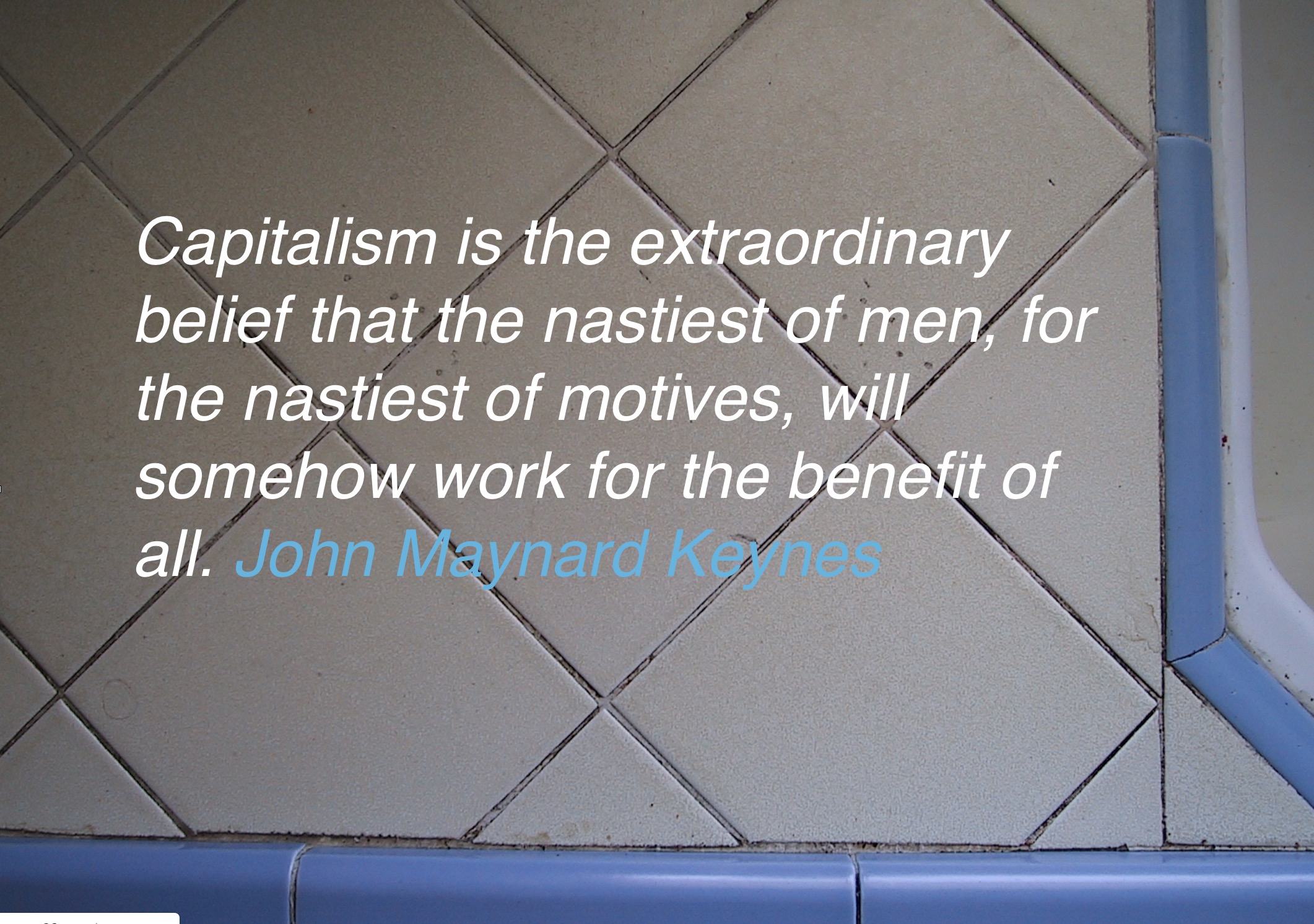 Another way to look at critical infrastructure.
Another way to look at critical infrastructure.
Linda Newton, at Carlton Univeristy in Canada teaches part of a program called ‘Infrastructure Protection & International Security’. It’s unique in that it combines students with a policy/international studies background with students with an engineering/architecture background. Each group takes courses from the other area along with several core courses.. Linda’s focus is on the definition used by both ISO 55000 and the European Commission but starts by positioning Critical Infrastructure from a historical perspective.
How did it evolve?
Is what was critical in the past still critical today and will it remain critical? This really gets students thinking about Critical Infrastructure. She uses photographs to illustrate the evolution of Critical infrastructure in the first lecture of the course & then asks ‘what’s the link between the following: e.g. Tower of London, London Docklands (now parks), Berlin Wall, Minuteman missile silos, etc.?’ (Answer: They were all critical at one point in history.)
The focus is on what makes an asset critical
This is both from the definition and then within its category, not on the vulnerability of assets from a security perspective but from an AM perspective. The role of an Asset Manager is to ensure infrastructure is managed as best as possible so that those who make emergency preparedness/business continuity planning decisions, whether the Critical Infrastructure is public or private, do so knowing the state of their respective critical assets. It’s the job of the AM to ensure there is redundancy and resiliency in critical assets, and advise accordingly, not because of an ‘evil intent’ but because it’s sound AM. It’s about information and making sure we have what we need at all phases to make informed decisions.
How do you look at – and deal with – critical infrastructure?
 When the Australian Government created a new body to scrutinise infrastructure asset sales for security risk, it occurred to me that we have made infrastructure vulnerable by making it large and interconnected. This is true of both physical and financial infrastructure (e.g. the banking system).
When the Australian Government created a new body to scrutinise infrastructure asset sales for security risk, it occurred to me that we have made infrastructure vulnerable by making it large and interconnected. This is true of both physical and financial infrastructure (e.g. the banking system).
In the past this was a means to greater efficiency and we were prepared to take the risks involved. Today, with technological developments, however, we can decrease the criticality of critical infrastructure by disaggregating, decentralising, and changing the ownership structure. This is particularly so for banking. But take electricity as an example. A series of interconnected, community-owned, local solar grids would be less susceptible to power failures as well as to actors of ‘evil intent’.
The blockage is the change in ownership structure. Not unnaturally, incumbents stand to lose. Large companies and governments in electricity supply are vulnerable to both criticality and financial risks. They have been putting a lot of thought into the changes that can be made so that we should not assume that they will resist change – although it is probably in their interest to slow it down. We all fight to preserve our own, it’s only natural.
So, if we want to see change in the community interest, it is in that interest to find ways to help current owners make the transition – profitably and with minimal delay.
What is being done, or could be done? What could we support? Ideas?

Hamurabai today?
Hammurabi reigned over Babylon from 1795-1750 BC. The code of law that he set down (on an 8 foot stone pillar) is considered the predecessor of Jewish and Islamic legal systems alike. Here are rules that applied for a house builder
- If a builder build a house for some one, and does not construct it properly, and the house which he built fall in and kill its owner, then that builder shall be put to death.
- If it kill the son of the owner the son of that builder shall be put to death.
- If it kill a slave of the owner, then he shall pay slave for slave to the owner of the house.
- If it ruin goods, he shall make compensation for all that has been ruined, and inasmuch as he did not construct properly this house which he built and it fell, he shall re-erect the house from his own means.
- If a builder build a house for some one, even though he has not yet completed it; if then the walls seem toppling, the builder must make the walls solid from his own means.
The Hamurabi code was brutal – but no doubt extremely effective. Poor workmanship in roads and other major infrastructure is not mentioned – infrastructure was somewhat limited back in Babylonian times.
Question for today: If you were to bring the code up to date for infrastructure, what might you include? And would you limit your penalties to workmanship alone, or would you include poor decision-making? Have fun!
 I am sitting in the dark, the temperature is 36 degrees Celsius. I have a radio and an iPad. I’d like to say that I’m on holiday in the tropics, but I’m in my home in the outskirts of a city and the power has been out for a 6 hours now. I’m a Telstra customer, but there is no mobile or landline service – batteries not included in their infrastructure apparently. If I were part of a local generating group I would be cool and communicating. If my group had a similar power failure I would be drawing from other interconnected communities.
I am sitting in the dark, the temperature is 36 degrees Celsius. I have a radio and an iPad. I’d like to say that I’m on holiday in the tropics, but I’m in my home in the outskirts of a city and the power has been out for a 6 hours now. I’m a Telstra customer, but there is no mobile or landline service – batteries not included in their infrastructure apparently. If I were part of a local generating group I would be cool and communicating. If my group had a similar power failure I would be drawing from other interconnected communities.
My question is – who has heard of the 3rd industrial revolution, and has anyone seen a recent advance toward it in Australia?
 “Infrastructure projects means local schools and local communities; it’s not just about the mega-projects in Sydney. Infrastructure is about upgrades to hospitals, upgrades to school halls, sporting facilities.”
“Infrastructure projects means local schools and local communities; it’s not just about the mega-projects in Sydney. Infrastructure is about upgrades to hospitals, upgrades to school halls, sporting facilities.”
Gladys Berejiklian, who is set to be voted by the Liberal Party room as the state’s new premier today (Monday), speaking to The Saturday Telegraph, 20 Jan.
I can’t help taking a two way bet on this. On the one hand, it is definitely refreshing to see State Governments move off the mega projects. But as school halls were a focus of the last big infrastructure spend during the economic stimulus (Building the Education Revolution), it is strange that it should still top the list of local infrastructure needs. Has this list been seriously thought through or quickly cobbled together?
Your view – populism or good decision-making?

Adelaide Fringe Parade Credit: Tony Virgo
Much infrastructure serves temporary needs and is under-utilised, sports stadia for example and many arts facilities. But when we explicitly recognise that so many of our needs are time bounded, we can do better. Here are two examples.
In six weeks Adelaide will host its 56th Festival Fringe. Scheduled already are 1305 shows. This far exceeds the number of performing arts venues available, so other spaces are pressed into service including: several distilleries, the Adelaide airport, open air spaces such as the Botanic Gardens or the River Torrens, schools and colleges, sporting club rooms, hotels and cafes, shopping centres, churches and libraries, to name just some.
A festival is an explicit recognition of temporariness – and effective! During the Festival thousands of people will go to events who wouldn’t normally set foot in a gallery or a theatre. The ad hoc nature of the venue is often part of the attraction.
A temporary need doesn’t necessarily mean ‘once off’. I saw a laneway in Manila that, in the early morning, was filled with tables and chairs and provided breakfasts to workers. By 8 am, the tables and chairs had disappeared and the cooking equipment was packed away. The laneway became a packed car park. After 8 pm when all the cars and their owners had gone home, the tables and chairs came out again, this time with candles, and people gathered for conversation over a glass of something. Each of these three services were temporary, albeit continuing, and they shared the lane infrastructure.
Wanted: other examples of avoiding the need to build more infrastructure by recognising the temporary nature of needs? (Or the converse!)
 When Nick Greiner, a graduate of the Harvard Business School, became the Premier of New South Wales he declared that Government was ‘Big Business’. It was said that he required a signed commitment from each of his Ministers about the way they were to manage their portfolios and that to properly manage the assets of those portfolios was one of his requirements. I never saw one of these contracts so I cannot vouch for their existence but I do know that it was the Ministerial offices who were first in line for copies of New South Wales’ Total Asset Management Manual. At the time I thought that this ‘big business’ approach was breath of fresh air, particularly as it led Nick Greiner to override the advice of his head of Treasury and to be the first state adopter of accrual accounting. He wanted to be able to compare the performances of his state authorities with large private companies. They used accrual accounting so he figured that the government should as well. This was a good move for better management of public assets so I applauded it. But there are limits to the application of business principles to the work of government, as Greiner himself found out some years later when he was charged with corruption. It wasn’t corruption. What he did would have been considered good management practice if it had been done within a business context. But it wasn’t. (See: ‘An Act of Corruption?’by Michael Gleeson and published by the Sydney Australian Broadcasting Corporation, 1992)
When Nick Greiner, a graduate of the Harvard Business School, became the Premier of New South Wales he declared that Government was ‘Big Business’. It was said that he required a signed commitment from each of his Ministers about the way they were to manage their portfolios and that to properly manage the assets of those portfolios was one of his requirements. I never saw one of these contracts so I cannot vouch for their existence but I do know that it was the Ministerial offices who were first in line for copies of New South Wales’ Total Asset Management Manual. At the time I thought that this ‘big business’ approach was breath of fresh air, particularly as it led Nick Greiner to override the advice of his head of Treasury and to be the first state adopter of accrual accounting. He wanted to be able to compare the performances of his state authorities with large private companies. They used accrual accounting so he figured that the government should as well. This was a good move for better management of public assets so I applauded it. But there are limits to the application of business principles to the work of government, as Greiner himself found out some years later when he was charged with corruption. It wasn’t corruption. What he did would have been considered good management practice if it had been done within a business context. But it wasn’t. (See: ‘An Act of Corruption?’by Michael Gleeson and published by the Sydney Australian Broadcasting Corporation, 1992)
Business looks after its customers in order to make a profit. That is its job. It is not the job of business to care for the environment or for the social fabric of the community or for the damages it causes to others by its actions. It is not the job of business to act on behalf of the citizenry. That is the job of the government. So if government is doing business’ job – who is doing the government’s job? More specifically, who is ensuring that infrastructure is designed for the benefit of the community as a whole? Who can? Unless we know the ‘who’, the ‘what’, is a moot question.
 The value of “value management”, as Mark Neasbey, Director of the Australian Centre for Value Management, has illustrated in each of his previous posts, is in challenging what we think we know. In “The Power of ‘What if?'” he reveals how questioning a ‘given’ led to a radically different solution and a saving of hundreds of millions of dollars. Mark writes:
The value of “value management”, as Mark Neasbey, Director of the Australian Centre for Value Management, has illustrated in each of his previous posts, is in challenging what we think we know. In “The Power of ‘What if?'” he reveals how questioning a ‘given’ led to a radically different solution and a saving of hundreds of millions of dollars. Mark writes:
The types of things that are generally in a list of givens include:
- a law or regulation that has to be complied with;
- a technical performance requirement – be it a range or a set minimum or maximum number or a specific number – which can represent dimensions, volumes, rates and so on;
- a limiting boundary or barrier or a technical constraint;
- financial – e.g. an amount not to be exceeded or specified sources of funding, interest rates and so on;
- ownership and operating arrangements;
- authorities and delegations;
- a specific time or date that the asset is required or to be disposed of; and
- application of a particular process or corporate policy.
[Not an exhaustive but just some main examples.]
Now the thing about such givens is that we develop our options or solutions accepting these, rather than challenging them. So they tend not to come into creative thinking processes, accept as a limitation. Yet what happens if its not really a given, rather it turns out to be possible to change it – even if only to treat it as an assumption?
A recent rail project to develop expanded train maintenance and stabling facilities began with a given that the existing mainline was fixed – it could not be changed. By not allowing it to be moved the project solution involved some complex and expensive engineering and infrastructure to manage the train movements into and out of the depot, which are planned to eventually have headways as short as 30 seconds. [Driverless trains.] There was also an effect on how the layout of the expanded facility could be realised – it was not going to be as ideally efficient as possible to operate.
During a value engineering review however, the effects of not moving the mainline to the engineered solution became clearly a cause – not of concern – but for a better appreciation of the opportunity forgone to create a simpler, more elegant engineered solution and at a huge cost reduction.
The mainline alignment had been stated as a given by the client early in the planning process. So all of the initial feasibility work and preliminary concepts evolved based on that given. What subsequently emerged in the value engineering review was that this arose from a decision not to acquire a particular developed property adjacent to the line.
By asking the simple question “what if…?” the team was able to show a much better outcome was possible – not only at a lower capital cost, but with significant long term reduction in maintenance and operational risks to the network.
Two important highlight lessons to me are:
- Do you have an understanding of what is being labelled or taken as givens for your assets and asset strategies?
- Do you have a process to all testing and challenging of such givens so decision-makers are aware of their implications?
The Task today: An answer to either of Mark’s questions OR an example of a positive ‘What if?” challenge of your own.
 This is the fourth of a series of posts by Mark Neasbey, a director in the Australian Centre for Value Management examining the role of the planning budget. In the first Mark considered the differing attitudes that may be taken to strict adherence to the budget and in the next two, he gave examples of the problems this had created for a major teaching hospital and for a mining operation. In this, the last of the present series, Mark considers how a planning budget can be constructed and utilized to smooth the path of the capital budget.
This is the fourth of a series of posts by Mark Neasbey, a director in the Australian Centre for Value Management examining the role of the planning budget. In the first Mark considered the differing attitudes that may be taken to strict adherence to the budget and in the next two, he gave examples of the problems this had created for a major teaching hospital and for a mining operation. In this, the last of the present series, Mark considers how a planning budget can be constructed and utilized to smooth the path of the capital budget.
It’s good business practice to require planning for asset projects to look well ahead of the short-term i.e the current financial reporting period. This is because assets typically last many years and impose long-term costs to the business or government service.
Good practice also involves life-cycle planning around the asset project – what it costs to establish, what needs to be spent to keep it operating, periodic costs for replacement and renewal of plant and equipment and also periodic refurbishment necessary to sustain functionality, safety, image etc. This extends to considering disposal – when an asset is no longer needed – what has to be done to get rid of it. This principle applies equally to physical assets and soft assets such as computer software or systems.
So when an initial concept is proposed, what sort of things need to be addressed and what’s the significance of these to the budget?
Well a key starting point has to be determining its purpose – what is the asset supposed to do? What are the business or service functions that the asset must accommodate or support? Why can’t these functions be undertaken some other way, without the need for the asset project?
These questions can’t be answered without research, we need to test and clarify the scope of the project so we can set a reasonable capital budget. That means we have to start with a planning budget so the planning and analysis work can be done to decide a) the functions that the organisation needs to deliver; b) the options that should be considered for delivering those functions – including non-asset strategies; c) determine the relative merits of the options – key pros and cons, including business (service delivery) risks.


Recent Comments